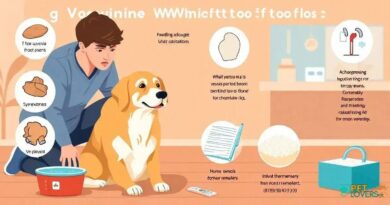What is exercise schedules
What is Exercise Schedules?
Exercise schedules refer to structured plans that outline specific times and activities for physical activity, tailored to meet the needs of dogs. These schedules are essential for maintaining a dog’s physical health, mental stimulation, and overall well-being. By adhering to a consistent exercise routine, pet owners can ensure their dogs receive the necessary amount of activity to thrive.
The Importance of Regular Exercise
Regular exercise is crucial for dogs as it helps prevent obesity, reduces behavioral issues, and promotes cardiovascular health. An effective exercise schedule takes into account the dog’s age, breed, and energy level, ensuring that the activities are appropriate and beneficial. For instance, high-energy breeds may require more vigorous activities, while older dogs might benefit from gentler walks.
Components of an Effective Exercise Schedule
An effective exercise schedule for dogs typically includes a mix of activities such as walking, running, playing fetch, and engaging in interactive games. It’s important to vary the types of exercises to keep the dog engaged and prevent boredom. Additionally, incorporating mental stimulation through training sessions or puzzle toys can enhance the overall exercise experience.
How to Create an Exercise Schedule
Creating an exercise schedule involves assessing your dog’s individual needs and preferences. Start by determining how much time you can dedicate to exercise each day. Then, outline specific activities and their durations, ensuring a balance between physical and mental stimulation. For example, a schedule might include a 30-minute walk in the morning, followed by a 15-minute training session in the afternoon.
Adjusting the Schedule for Different Seasons
Seasonal changes can impact a dog’s exercise routine. In warmer months, it’s essential to schedule outdoor activities during cooler times of the day to prevent overheating. Conversely, in colder months, shorter, more frequent walks may be necessary to keep the dog comfortable. Always monitor your dog’s behavior and adjust the schedule as needed to ensure their safety and enjoyment.
Signs Your Dog Needs More Exercise
Recognizing when your dog needs more exercise is vital for their health. Signs include excessive barking, destructive behavior, and hyperactivity. If your dog seems restless or is gaining weight, it may be time to reassess the exercise schedule and increase the frequency or intensity of activities. Regularly observing your dog’s behavior can help you make necessary adjustments.
Incorporating Socialization into Exercise
Socialization is an important aspect of a dog’s development, and exercise schedules can include opportunities for social interaction. Visiting dog parks or arranging playdates with other dogs can provide both physical exercise and social stimulation. This not only helps with behavior but also allows dogs to develop important social skills.
Using Technology to Track Exercise
With advancements in technology, pet owners can now use apps and fitness trackers to monitor their dog’s exercise levels. These tools can help track the duration and intensity of activities, making it easier to adhere to an exercise schedule. By analyzing this data, owners can make informed decisions about their dog’s exercise needs and adjust the schedule accordingly.
Consulting a Veterinarian
Before establishing an exercise schedule, it’s advisable to consult with a veterinarian, especially if your dog has pre-existing health conditions. A vet can provide tailored recommendations based on your dog’s specific needs, ensuring that the exercise plan is safe and effective. Regular check-ups can also help monitor your dog’s health and adjust the exercise schedule as necessary.
Maintaining Consistency
Consistency is key when it comes to exercise schedules for dogs. Establishing a routine helps dogs understand when to expect physical activity, which can lead to better behavior and a happier pet. By sticking to the schedule as closely as possible, pet owners can create a stable environment that promotes health and well-being for their furry companions.




